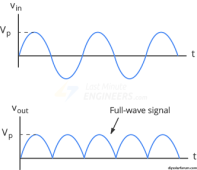erik.calco
Solar Badger
As a follow-up to this great question about combining SCCs, can you combine inverter outputs into one live?
I'm buying one of these manual transfer switch panels. They both take in two lives (110V). The difference is 30A and 50A inputs. All my AC load outputs are 20A; so this panel will have nothing but 20A breakers in it for output. You can have up to 3 or 5 on each L circuit from the inverter. Don't worry about load... assume not all switches will be on gen at any given moment. This is not a load question.
The question is, if I am producing 2.4Kw via one inverter, and I want to add another, is there a way to combine them into one 50A live input to this subpanel in parallel without backfeeding each other? Or, do they have to have their own dedicated L input into the panel?
If you can combine in parallel, then the 50A is definitely the way to go. It may still be the way to go if you think you'll be adding an inverter producing over 3600 watts next.
I'm buying one of these manual transfer switch panels. They both take in two lives (110V). The difference is 30A and 50A inputs. All my AC load outputs are 20A; so this panel will have nothing but 20A breakers in it for output. You can have up to 3 or 5 on each L circuit from the inverter. Don't worry about load... assume not all switches will be on gen at any given moment. This is not a load question.
The question is, if I am producing 2.4Kw via one inverter, and I want to add another, is there a way to combine them into one 50A live input to this subpanel in parallel without backfeeding each other? Or, do they have to have their own dedicated L input into the panel?
If you can combine in parallel, then the 50A is definitely the way to go. It may still be the way to go if you think you'll be adding an inverter producing over 3600 watts next.
Last edited:




